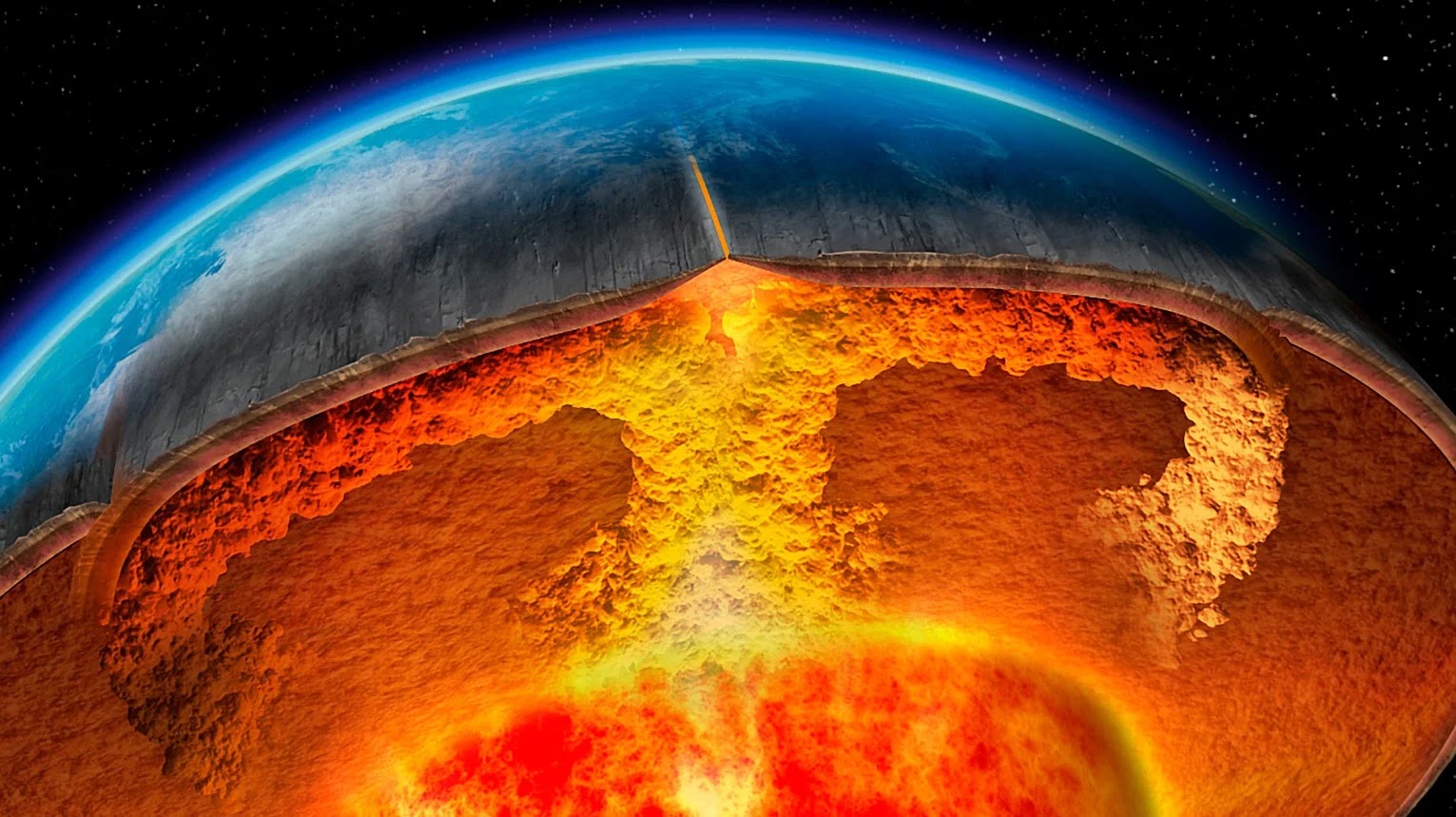
Groundbreaking scientific discoveries are being made at an astonishing pace. A pioneering study claims that beneath our feet, within the Earth's crust, lies a vast ocean.
The ocean lies at an astonishing depth of about 643 kilometers below the surface of our planet. This large reservoir of water is stored at a point where the mineral ringwoodite is found. This intriguing discovery changes our understanding of the water cycle on Earth and the complex geophysical processes of our planet.
Before this groundbreaking discovery, scientists knew that water could be stored within the Earth's mantle, but not in the form we know it. This water does not fit our classifications as solid, liquid, or gas. Instead, it has a fourth state, which is when it is inside the sponge.
This pioneering research first saw the light of day in a scientific paper titled “Dryness at the Top of the Lower Mantle.” As part of this comprehensive study, precise maps of the details of groundwater phenomena were drawn.
The “sponge” in the Earth's mantle
“(The mineral) ringwoodite is like a sponge, absorbing water,” explained geophysicist Steve Jacobsen, a key member of the research team. “There is something very special about the crystal structure of ringwoodite that allows it to attract hydrogen and trap water.” This statement provides a unique insight into the magnetic nature of this particular mineral.
“This mineral can contain a huge amount of water in deep mantle conditions,” Jacobsen added. Geophysical observations lend weight to the idea that there may be a global water cycle that is more complex and interconnected than previously thought.
“I believe we are finally witnessing a water cycle for the entire Earth. This may shed light on the enormous amount of liquid water that graces the surface of our planet and sustains life. For decades, the scientific community has been chasing this elusive water in the depths,” Jacobsen explained.
Scientists were studying earthquakes when they heard the sound of waves coming from deep within the Earth
How did scientists find this underground “treasure”? The answer lies in the powerful vibrations and earthquakes to which our planet is exposed. Researchers have studied Earth's seismic activities in depth. Along the way, they realized that measuring instruments and devices designed to detect and record earthquakes were detecting waves coming from beneath the Earth's surface.
Through detailed analysis of this data, the researchers concluded that these waves interact with the water present in ringwoodite. To understand the volume of water we are talking about, it is enough to consider that if ringwoodite contained only 1% water, the Earth's crust could host a volume of water three times the volume of all the oceans.
The vast expanse of oceans, rivers and lakes of our blue planet has always fascinated humanity. But this hidden ocean, located deep in Earth's mantle, is now forcing scientists to rethink our understanding of the planet.
Such discoveries remind us of the infinite mysteries our planet holds and the exciting uncharted waters of scientific exploration that lie ahead. Indeed, in an age of shocking scientific discoveries, the discovery of the subsurface ocean makes us marvel at the complexity of our world and the vast universe in which we live.

“Total alcohol fanatic. Coffee junkie. Amateur twitter evangelist. Wannabe zombie enthusiast.”





More Stories
Is this what the PS5 Pro will look like? (Image)
Finally, Windows 11 24H2 update significantly boosts AMD Ryzen – Windows 11 performance
Heart Surgeon Reveals The 4 Things He ‘Totally Avoids’ In His Life